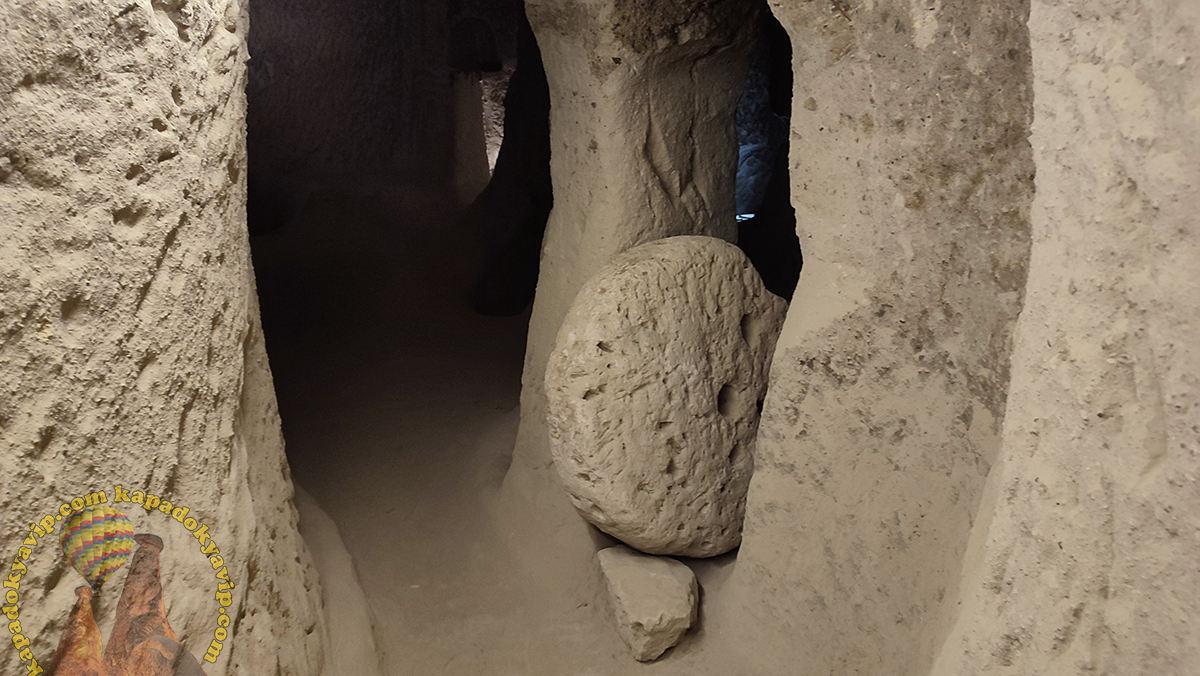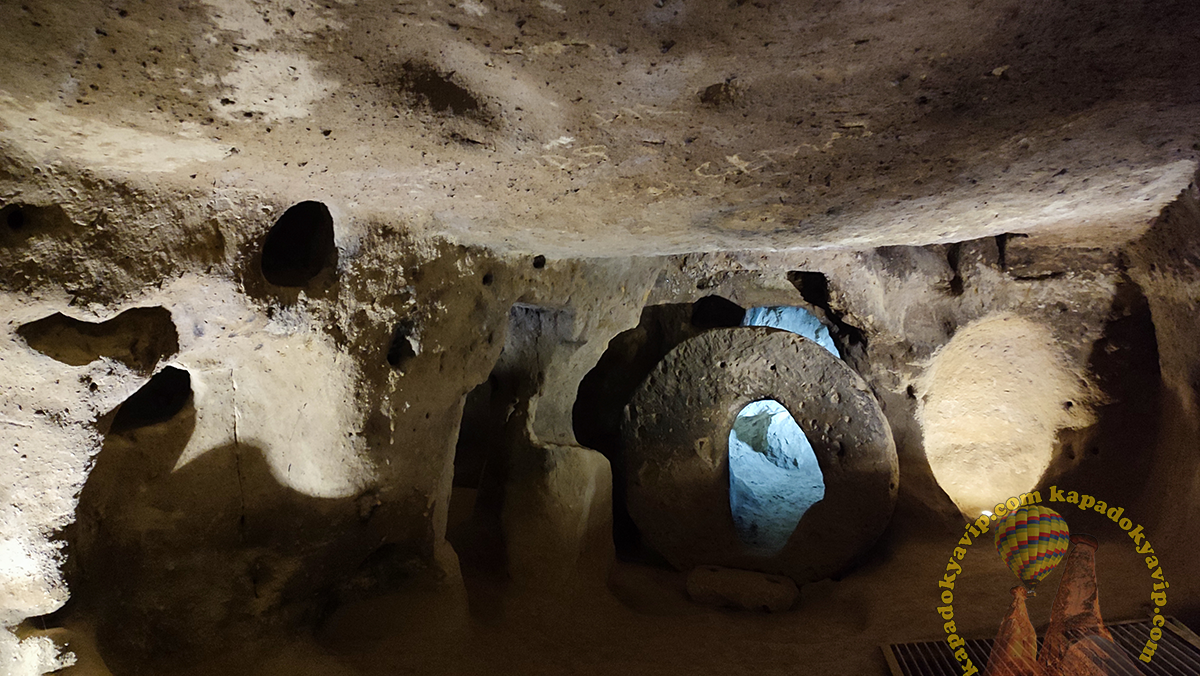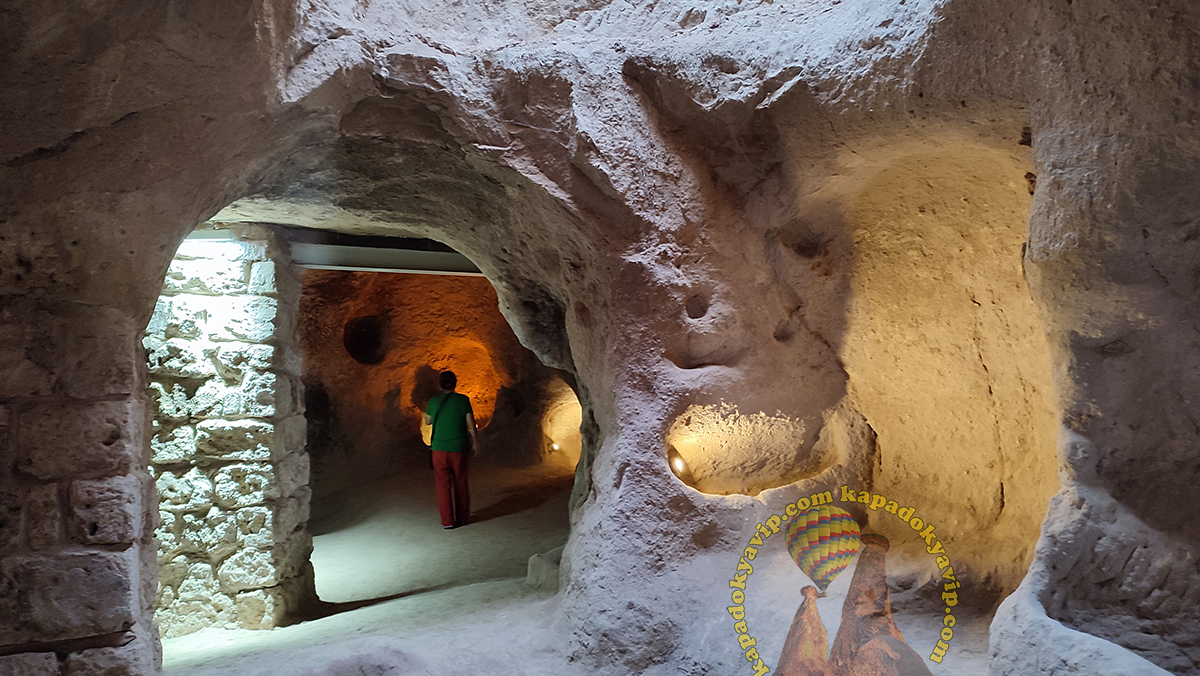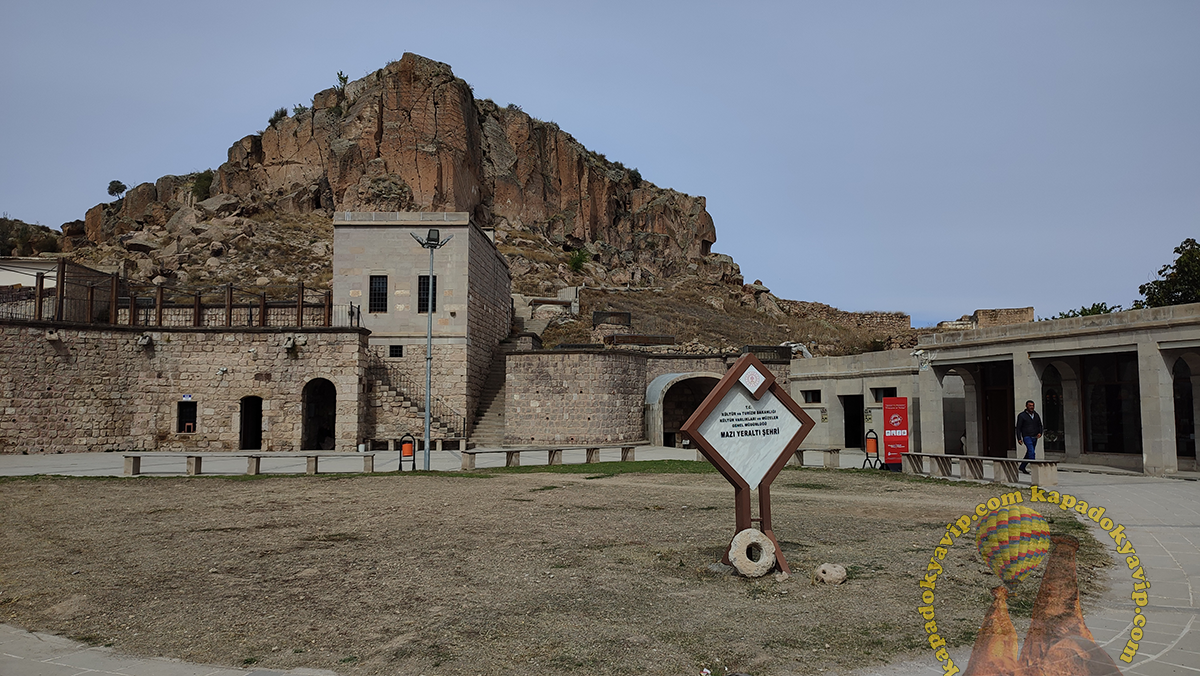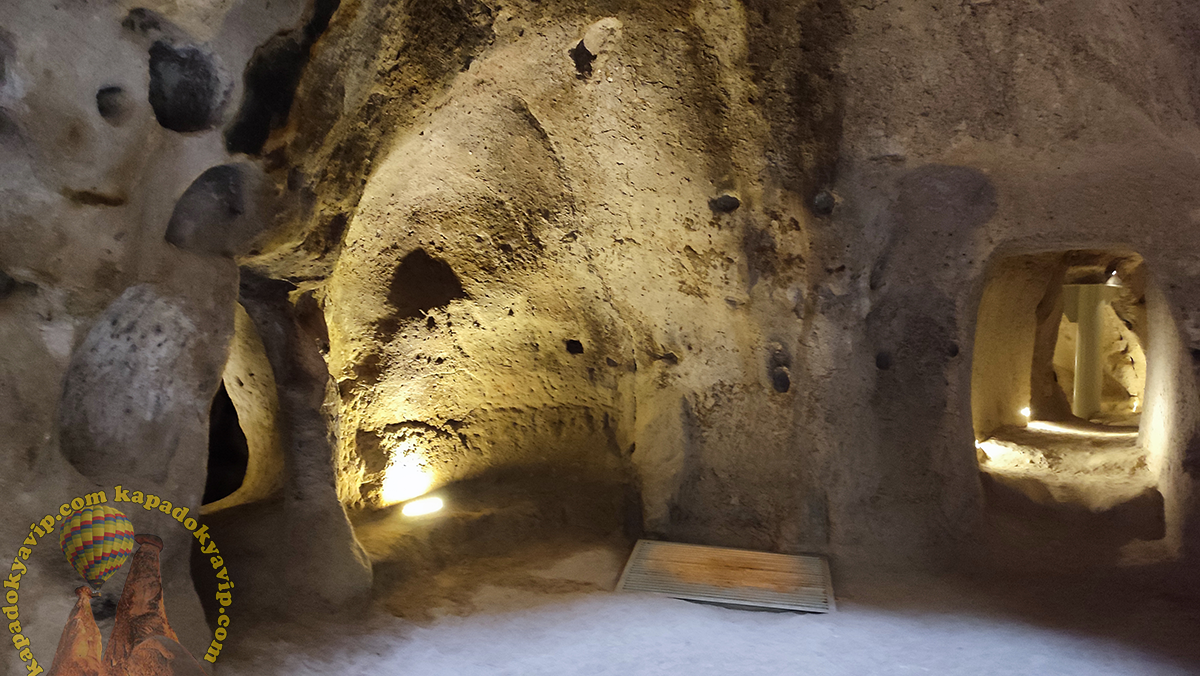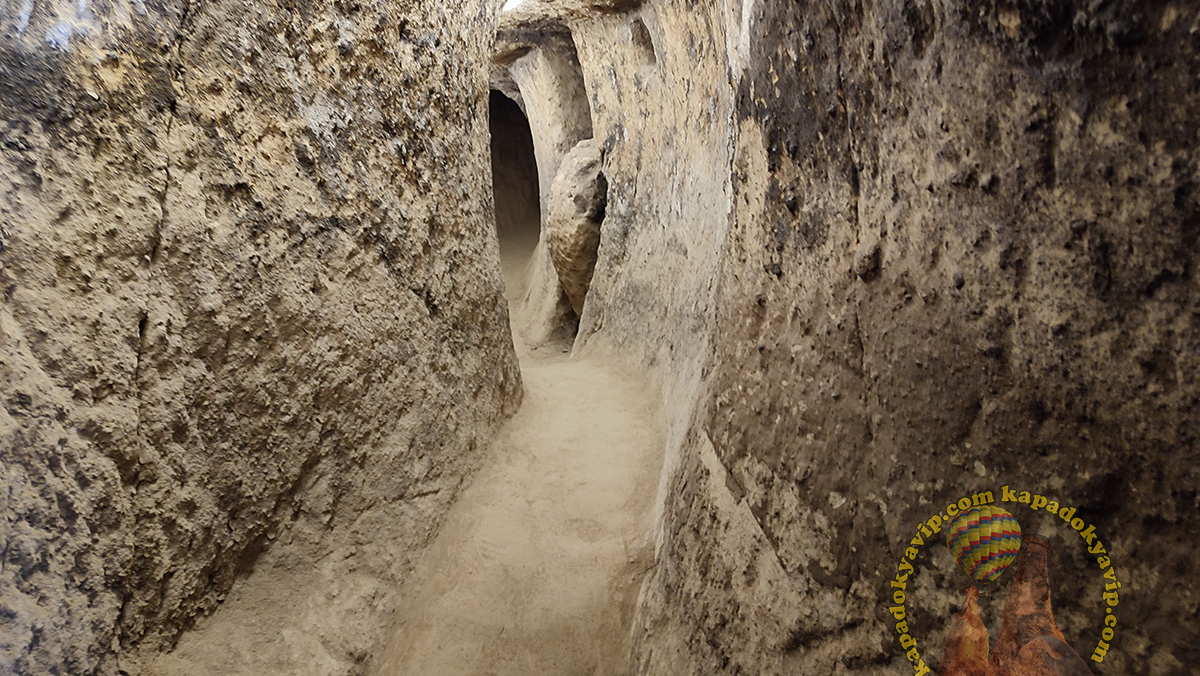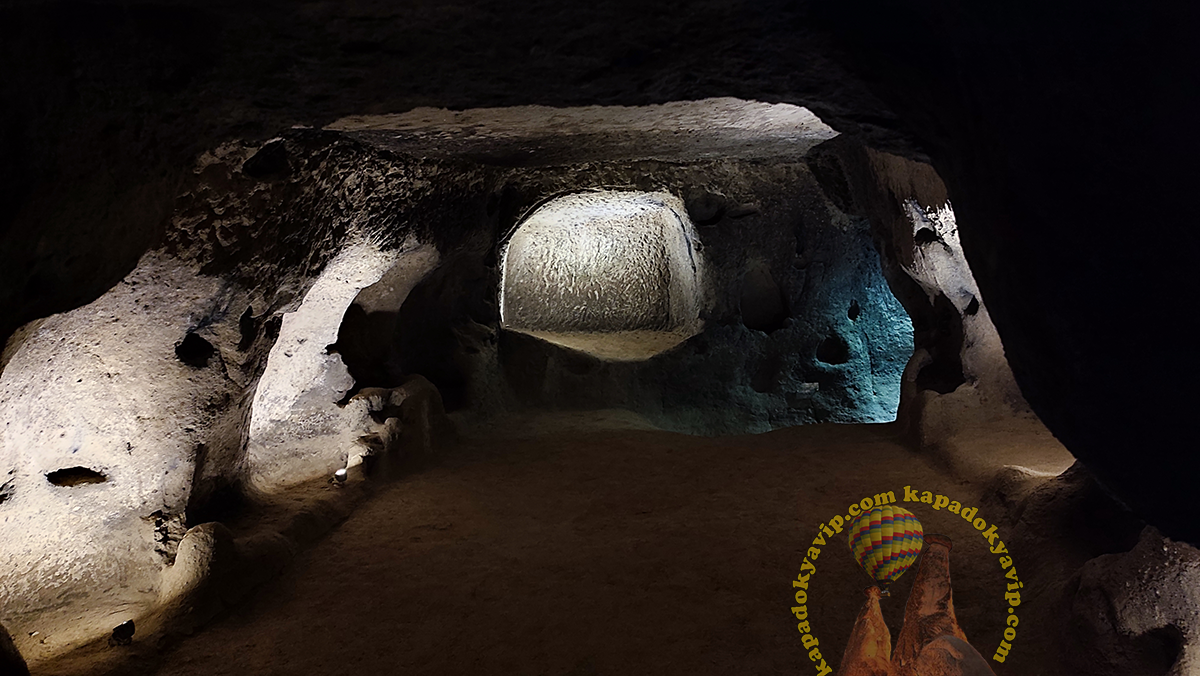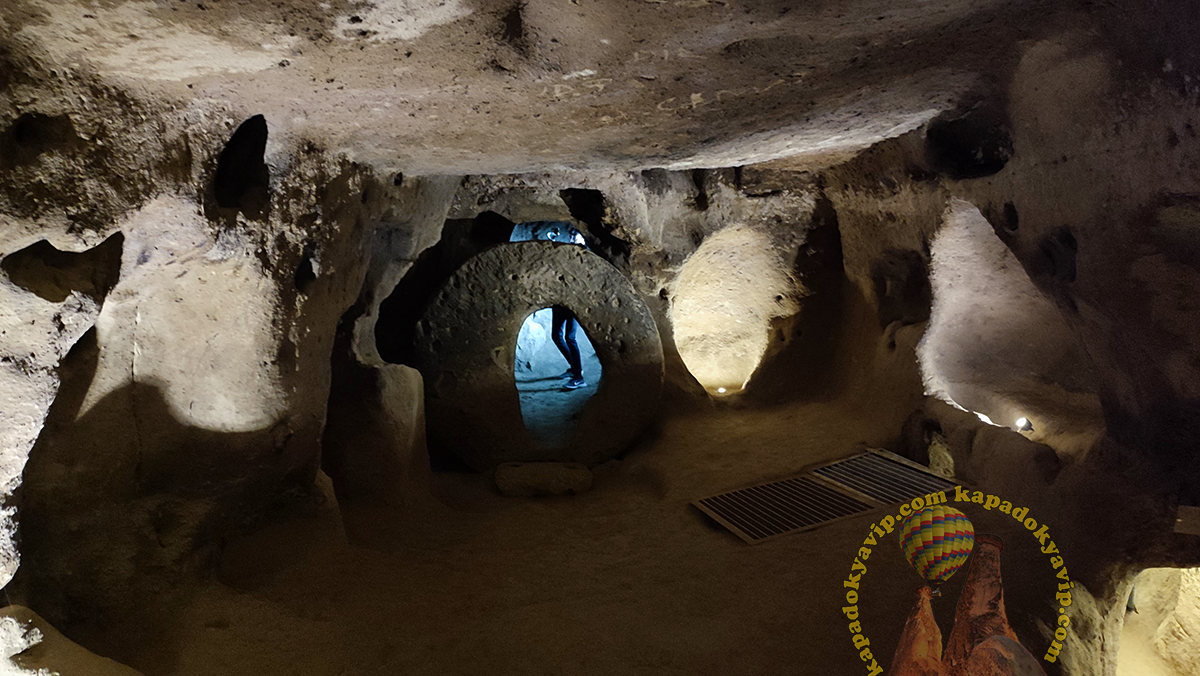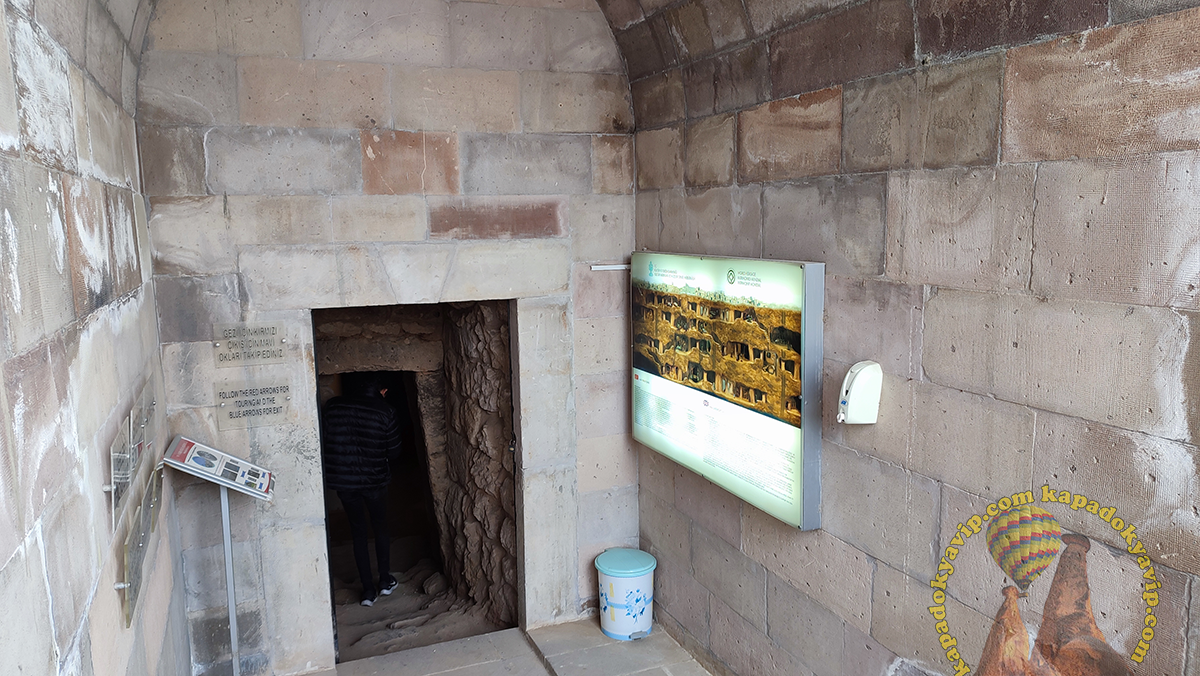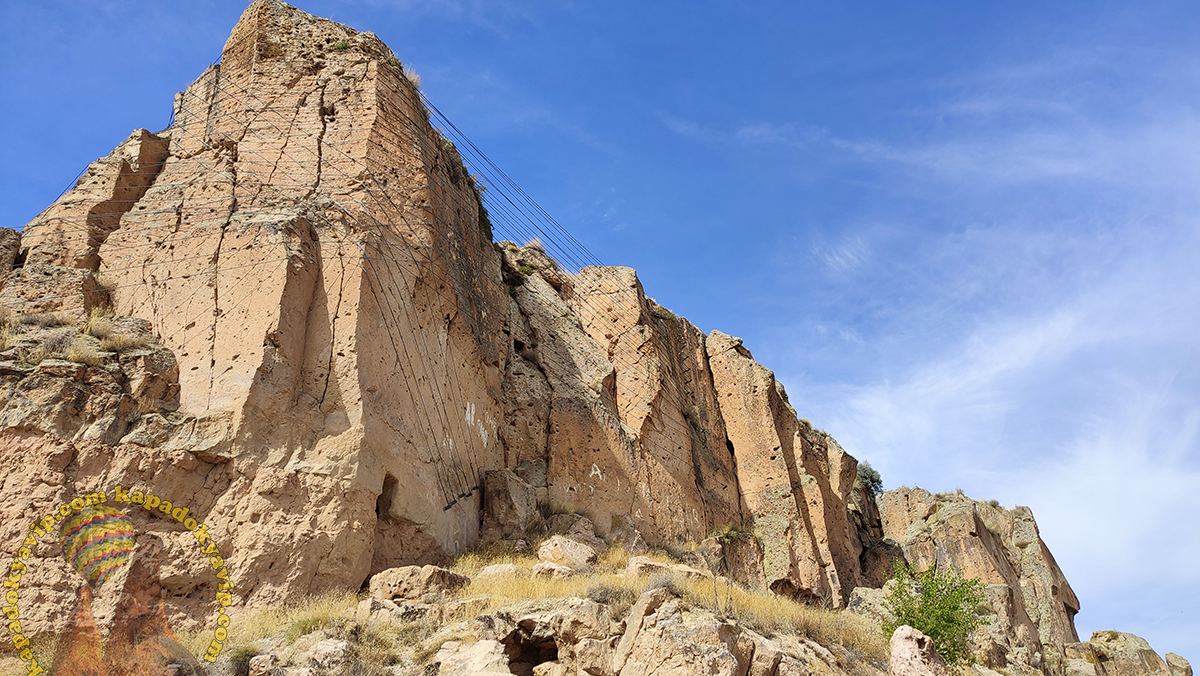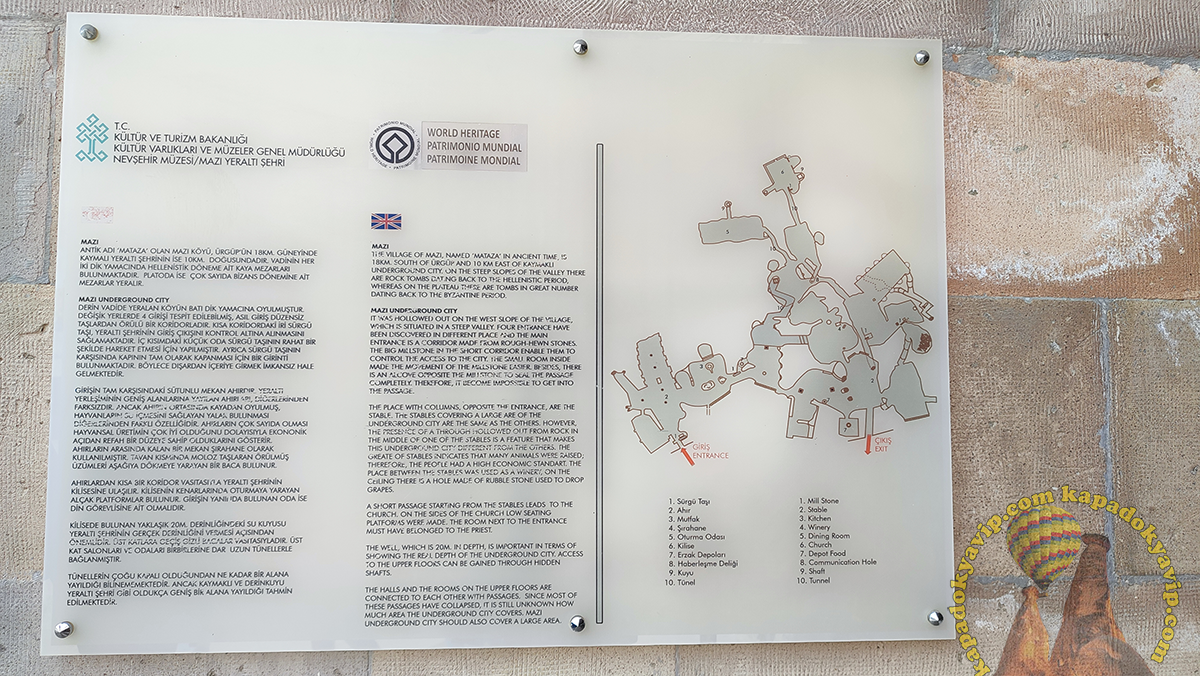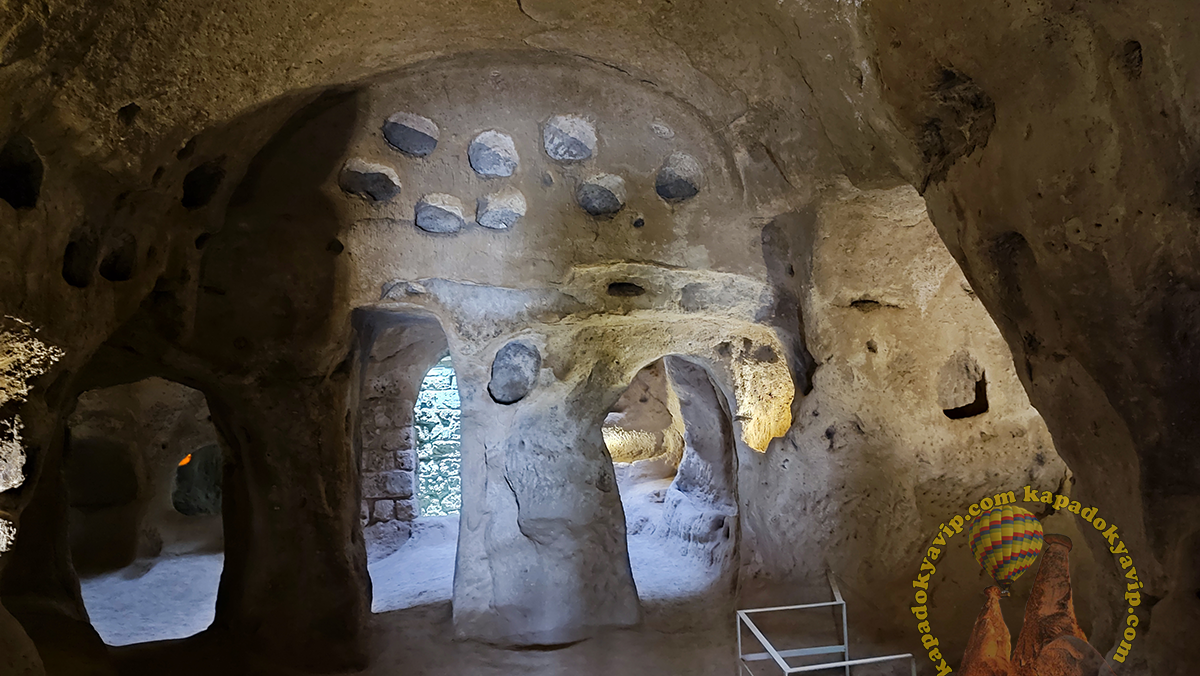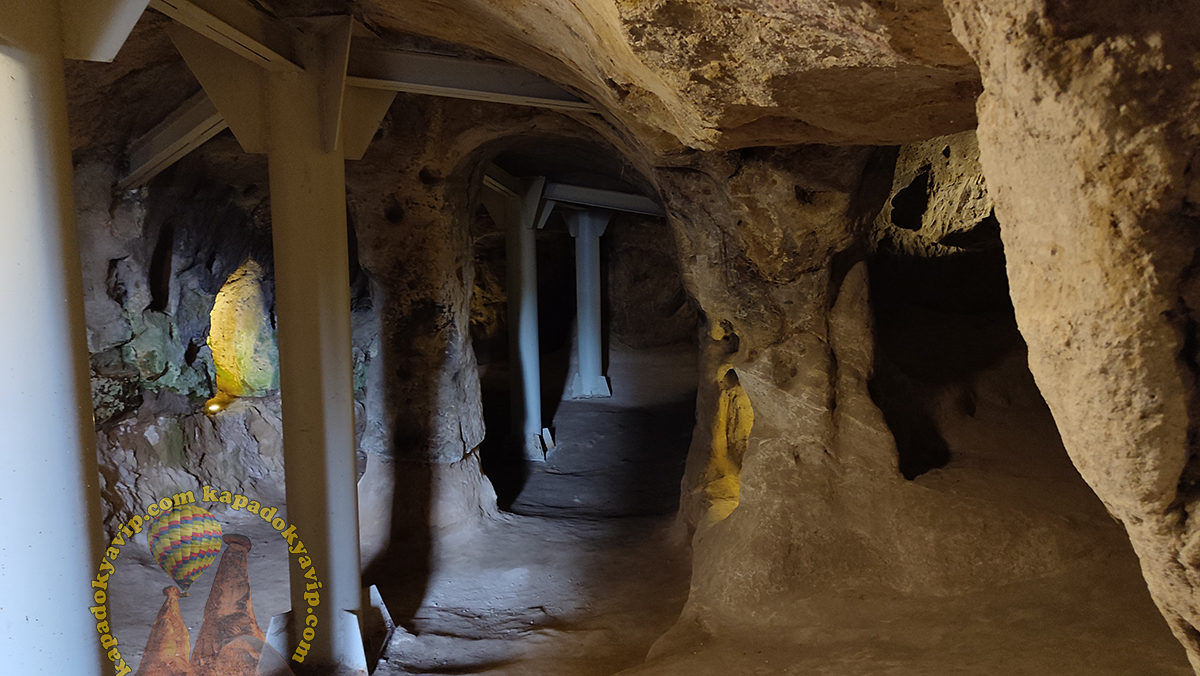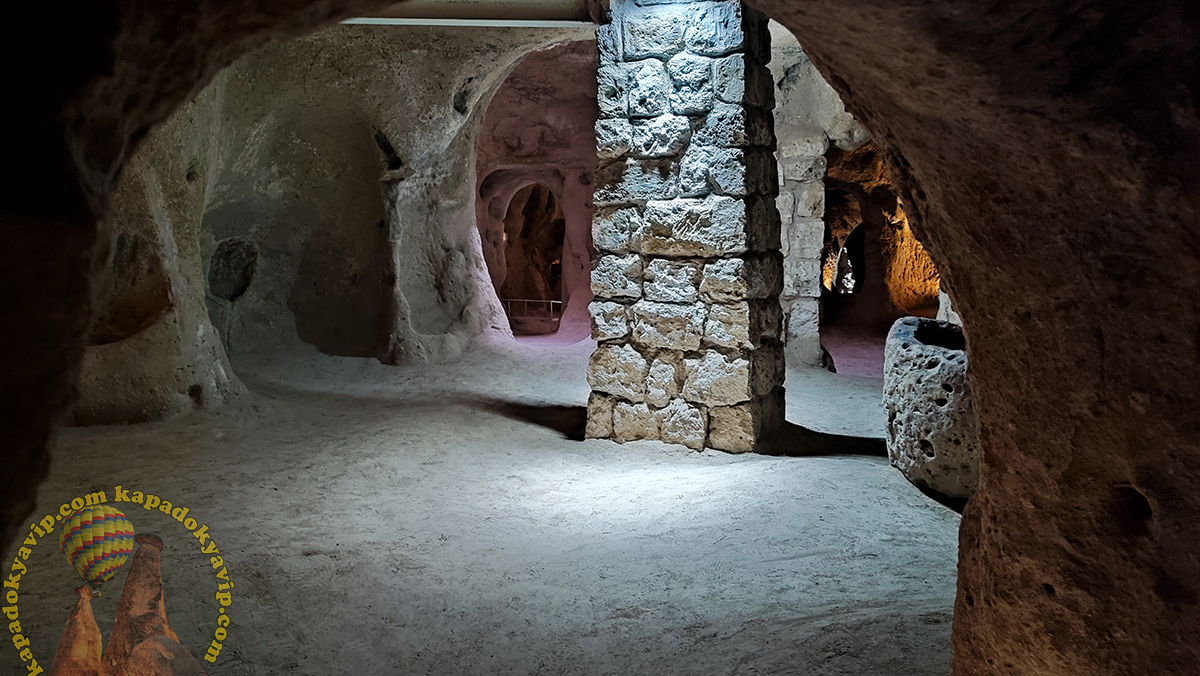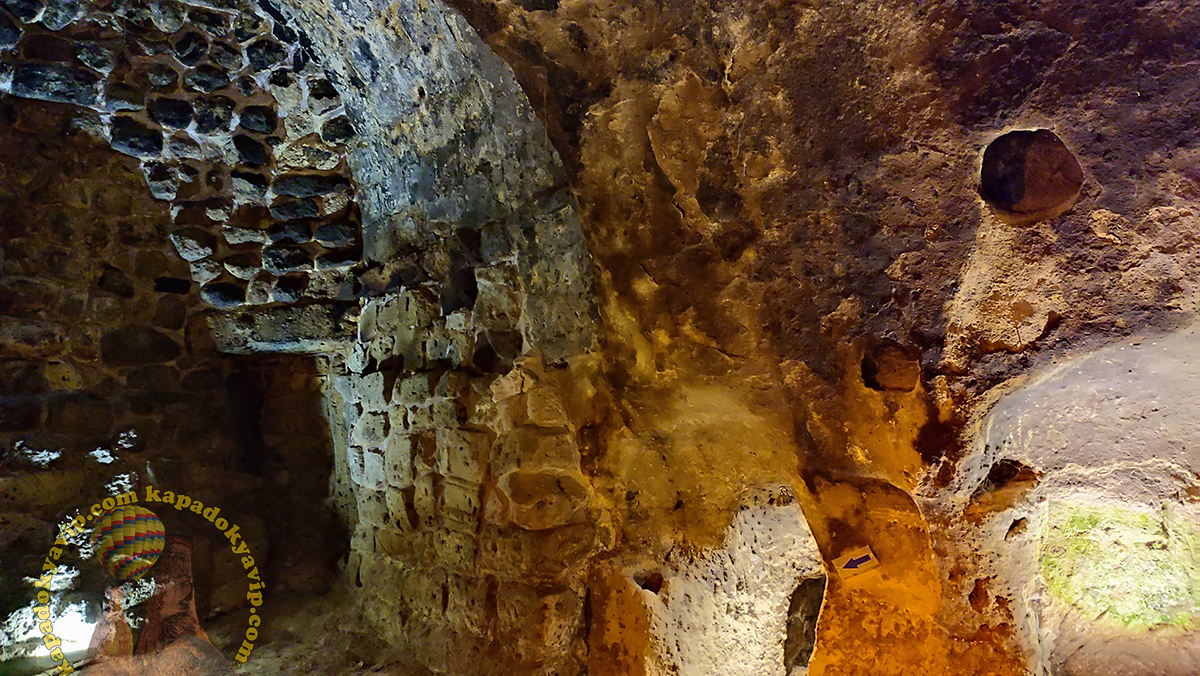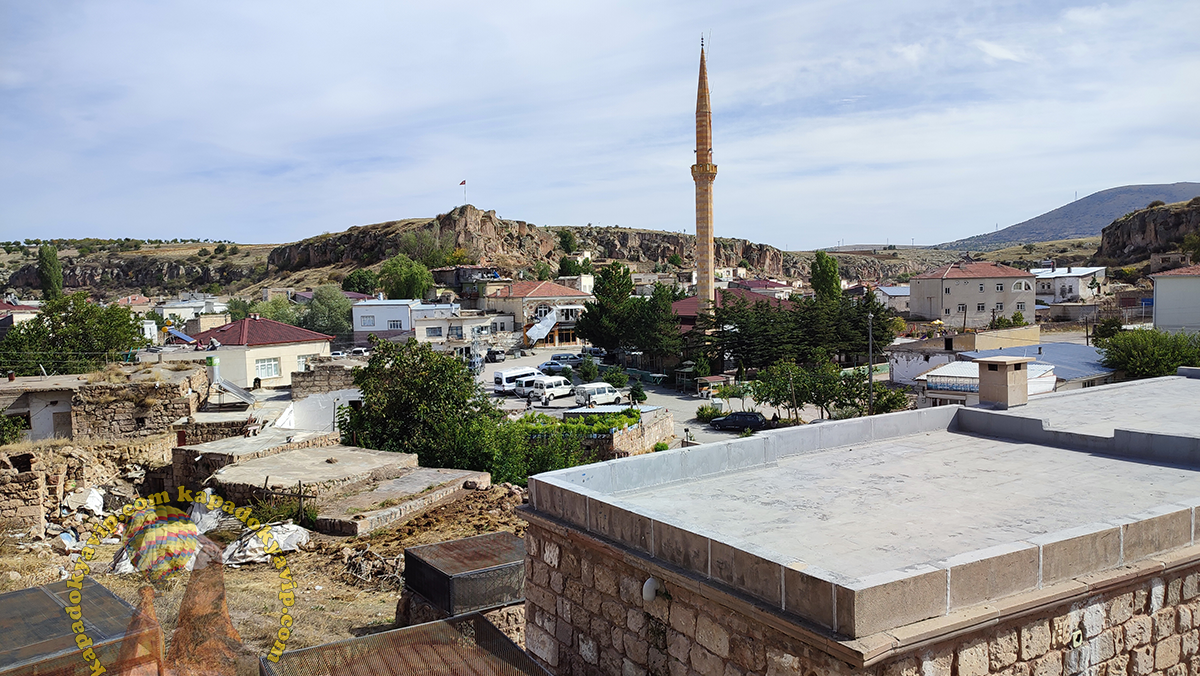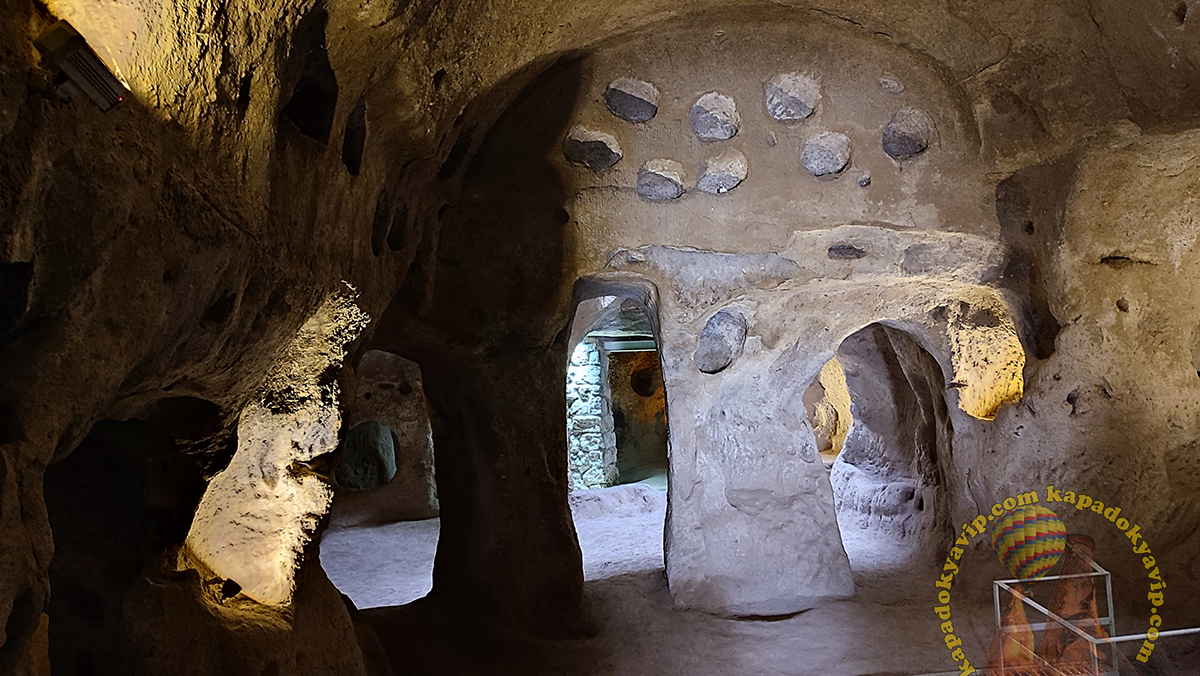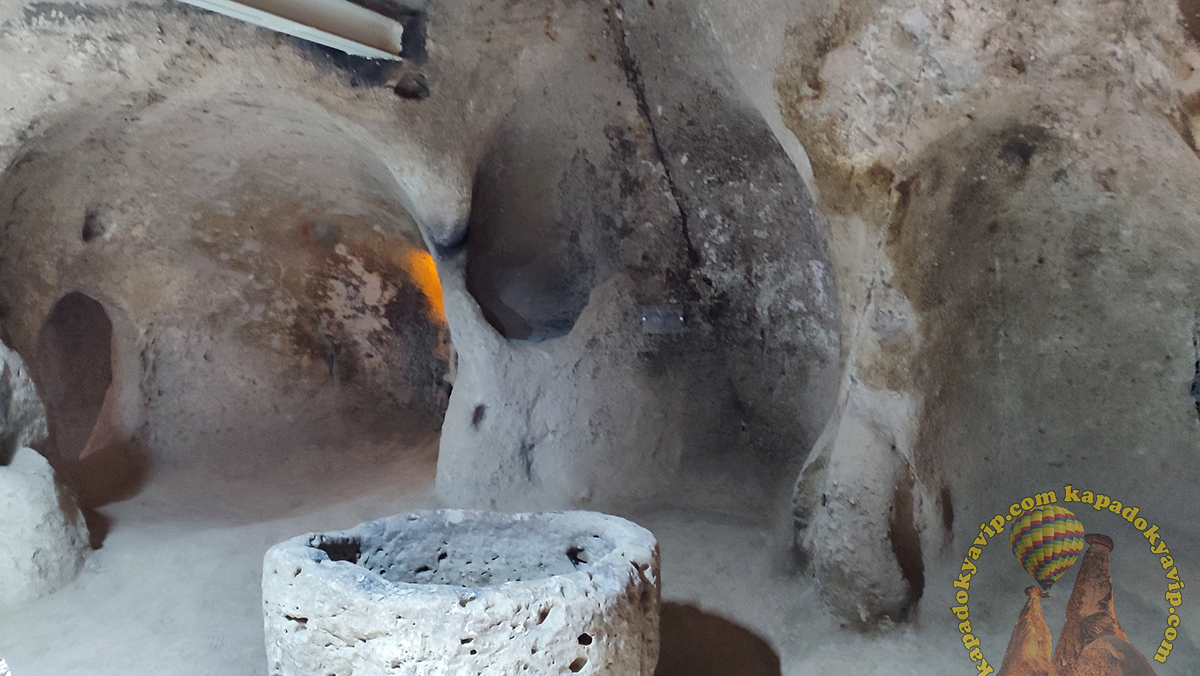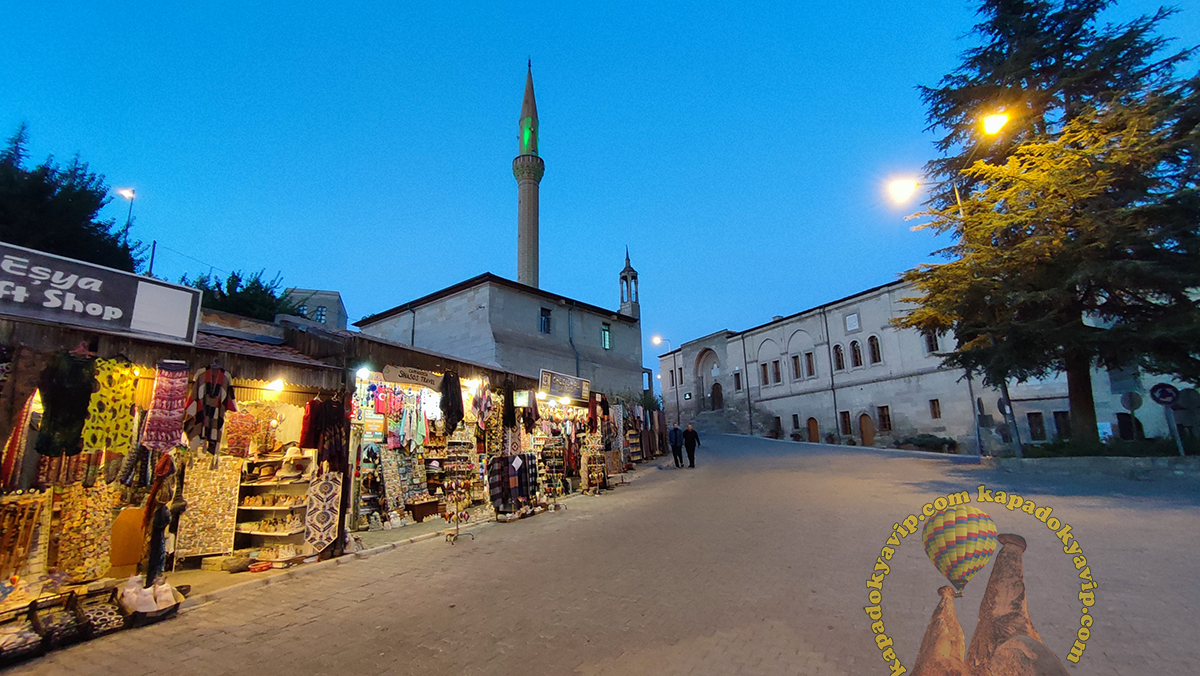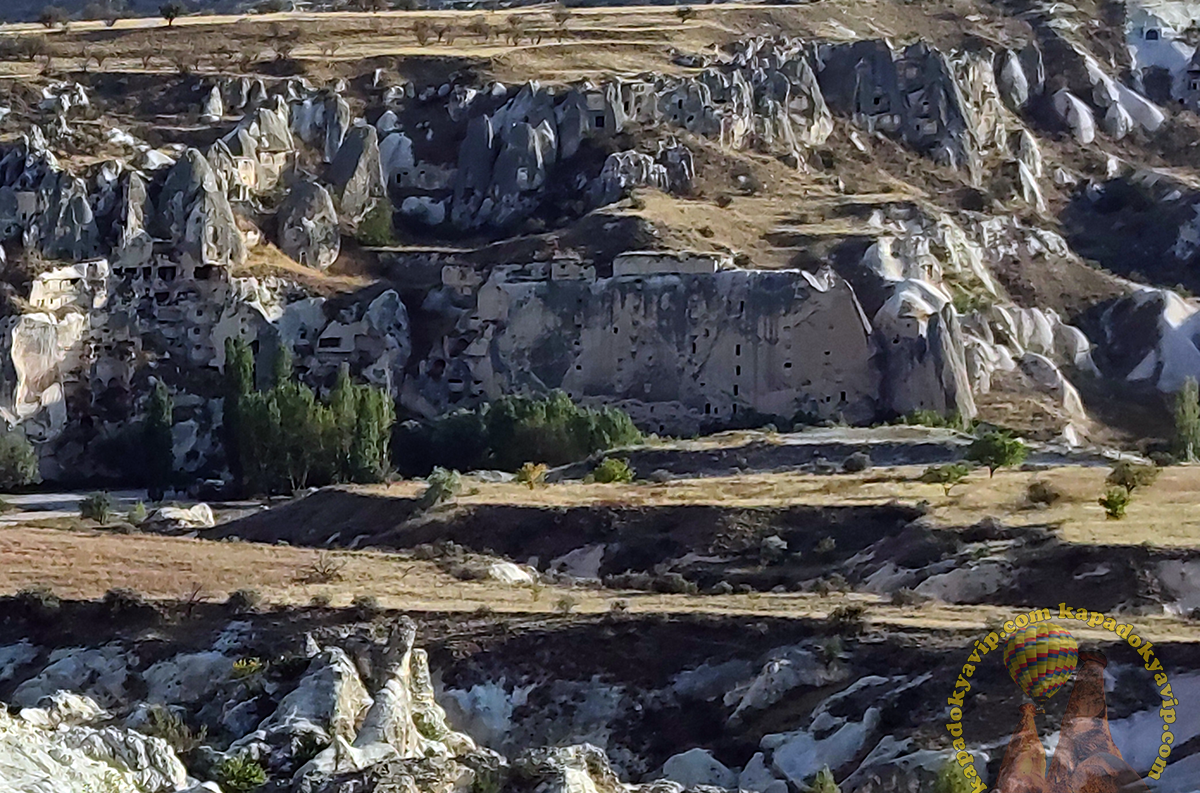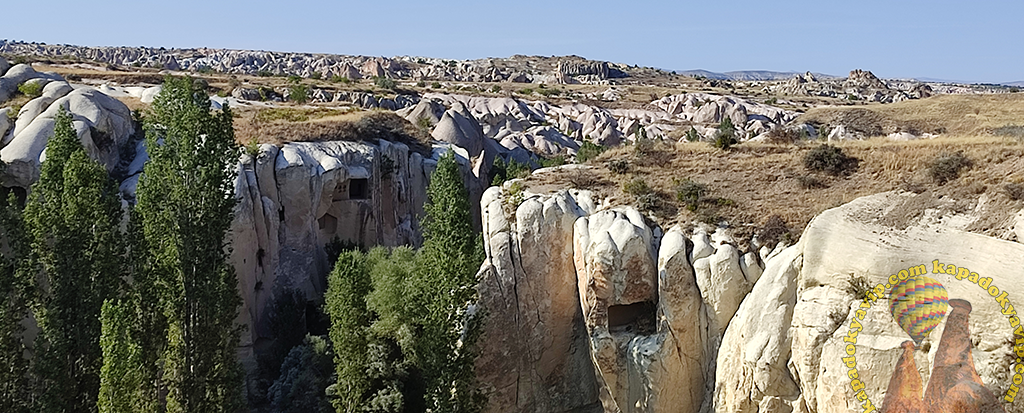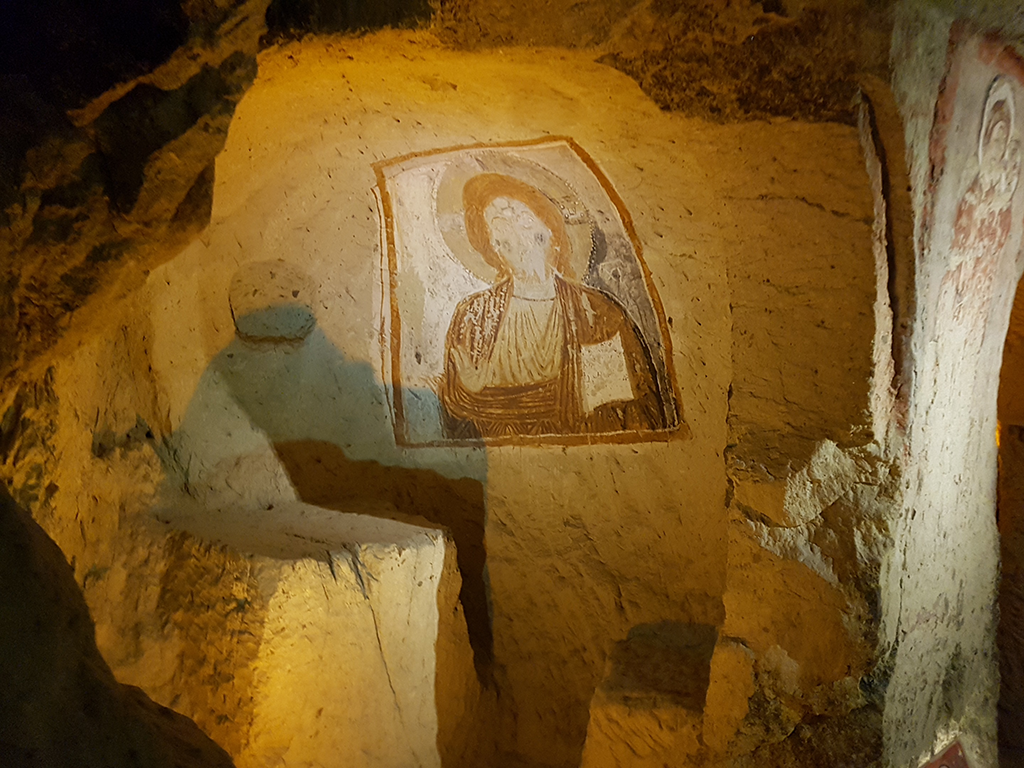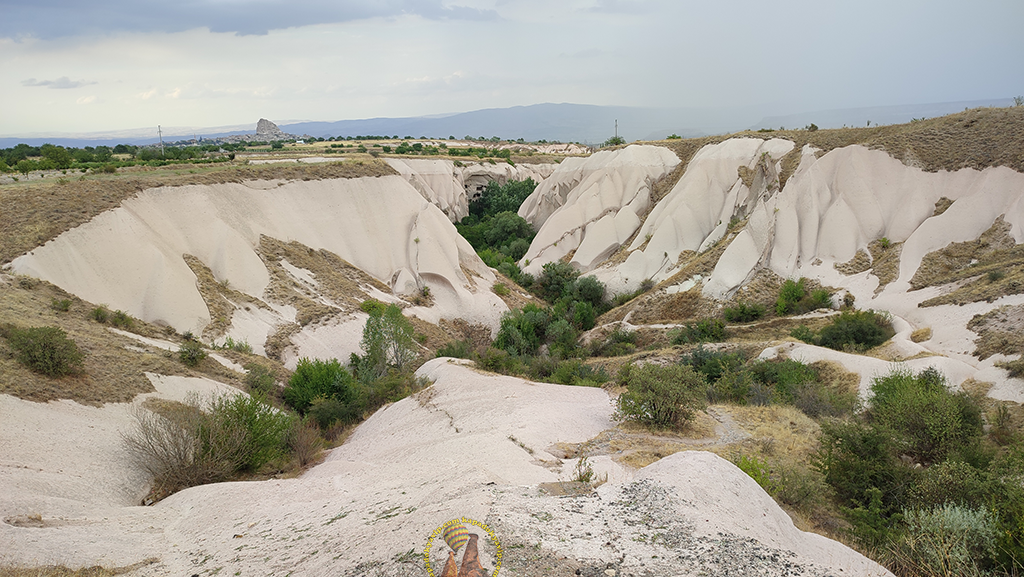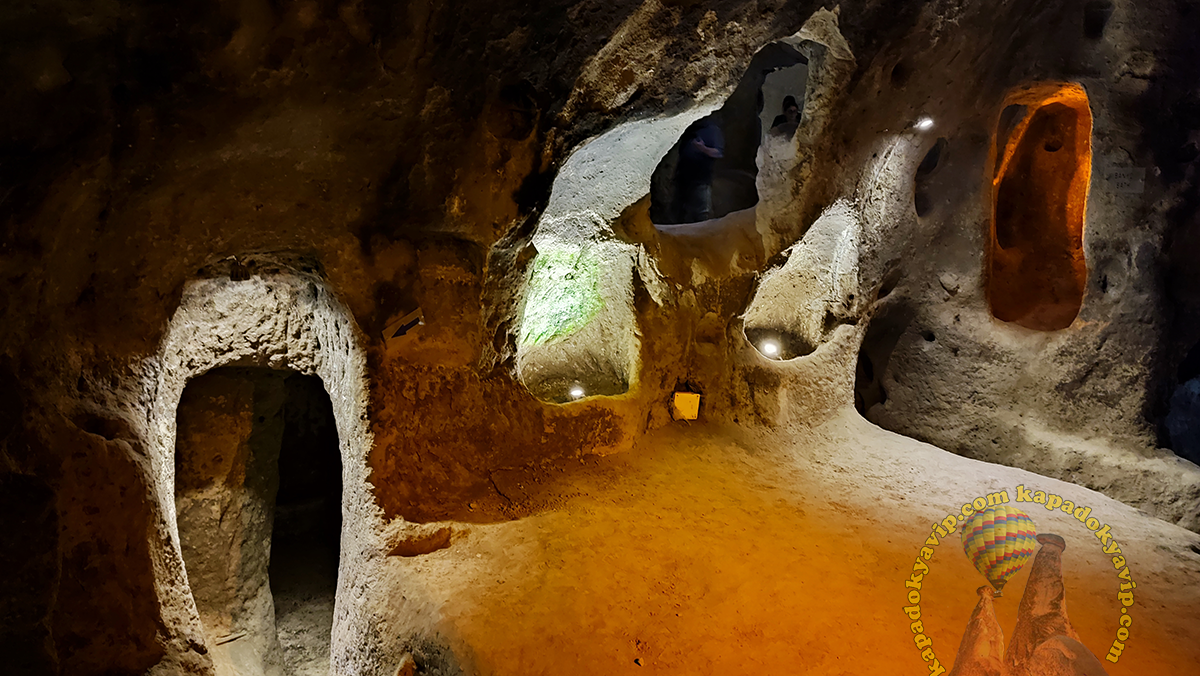
Mazı underground city is one of the numerous underground cities within the boundaries of Cappadocia, and throughout history, these underground cities have served as shelters for people. One of the notable underground cities in Cappadocia is Mazı Underground City, named after the village it is located in. It holds a significant place among the underground cities in the Cappadocia region. The stone and soil of Cappadocia are enchanting, the sky is gilded blue, and the houses are made of clay, boiling pots.
Underground city is the most recently discovered underground city in Cappadocia, found by chance in 1995. It was discovered by a shepherd, and subsequent excavations by archaeologists revealed and restored the underground city, allowing it to reclaim its place in history.

Mazı underground city has a rich history that dates back to ancient times and is closely associated with the village where it is located. Its historical roots extend as far back as the Hellenistic period. The village of Mazı in Nevşehir is not only famous for its underground city but also for its churches and tombs, preserving historical traces. It offers a visual feast for history-loving travelers with its ceramic furnace that reflects its period. The rock-carved tombs and churches date back 2000 years, having hosted various civilizations such as Phrygians, Byzantines, and Romans. The region bears unique traces from the civilizations it encountered and harbored throughout history. Planning is essential for exploring the attractions in Cappadocia.
Mazı underground city derives its name from the Mazı tree, given its robust historical background. In the past, Mazı trees were used to make the axles for wagons. There are only two Mazı trees left in the village, and these trees used to be widespread. For those who have never seen the Mazı tree before, there may be curiosity about these trees. Within the village, only two of these trees remain. Besides the speculation that the village’s name is derived from these trees, there is also a belief that it originates from the root “Mazata.” “Mazata” translates to the ancient city and is thought to be the source of the word “Mazı.

Underground City, its mysteries, and intriguing features capture attention in the Cappadocia region. Positioned on the western steep slope within the village, it welcomes visitors as a relic from the Early Roman Period. Many rock tombs and churches, dating back to the Byzantine Period, surround the valley and plateau. The underground city has eight levels, and to enter and descend into its depths, visitors need to use four different entrances. The control points at the entrances, like in other underground cities in the region, are made of sliding stones, providing protection against enemies. For the ease of sliding stones, small chambers in the shape of sliding stone sockets were used. This allowed the stones to be easily moved. Small holes were drilled in the middle of these stones, and spears could be inserted through them, intending to create a defense against enemies.
The unique features of Mazı underground city make the visit enjoyable and fascinating. Like in all other Cappadocian underground cities, there are stables on the entry floor of this underground city. Since it was thought that bringing animals down to deeper levels and protecting them would be much more challenging, plans were made accordingly. In the middle of the stable on the entry floor, there are carved troughs for animals, which is a unique feature specific to Mazı underground city. Due to the numerous stables and its estimated capacity to accommodate a population of 6,000, it is believed that this underground city had a high level of prosperity. Similarly, the primary livelihood was animal husbandry. Established for long-term living rather than just for shelter and protection from attacks, this underground city was designed to accommodate people for an extended period, not just as a temporary refuge.
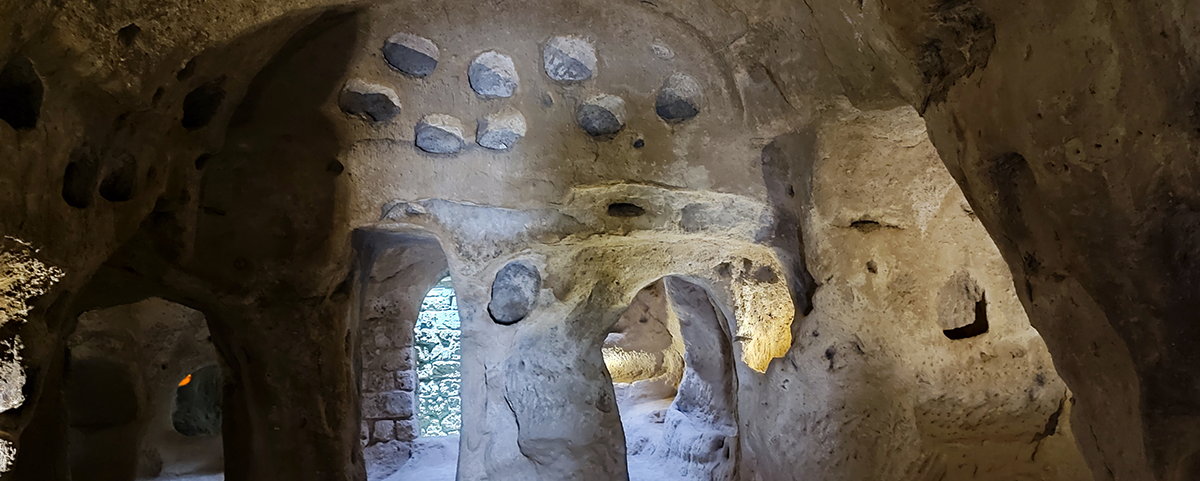
When entering the Mazı underground city in Cappadocia from the center of the village, you encounter a barn constructed with irregular stones. Following the barn, there is a winery where grapes are poured from the ceiling to make wine, featuring a chimney made of rubble stones. After a short corridor, you reach a church that is sealed with sliding stones, indicating restricted access. This underground city, with a depth of 20 meters, appears to be a partially revealed living space. The church is adorned with reliefs, and seating areas are also present.
What sets Mazı underground city apart is its status as a genuine engineering marvel. The chimneys of the underground city can connect long and narrow passages on the upper floors with relatively short and narrow passages on the lower floors. This unique feature demonstrates meticulous planning. The extent of the tunnels and where they lead is not precisely known. However, it is understood that the underground city provides a considerably spacious living area, suggesting that people may have resided here for extended periods.
Mazı underground city is located in the Ürgüp district, which is part of the Nevşehir province in Turkey. It is situated approximately 18 km south of Ürgüp. The city takes its name from the Mazı Village, where it is located. Mazı underground city is precisely east of the Kaymaklı Underground City, and these two underground cities are in close proximity, with only a 10 km distance between them. Visitors to the region are strongly recommended to explore both significant underground cities, as they each have unique features and historical traces that make them must-see historical structures. Guided tours with professional guides are available for a more in-depth exploration and to gain detailed insights into the history and architecture of Mazı underground city.
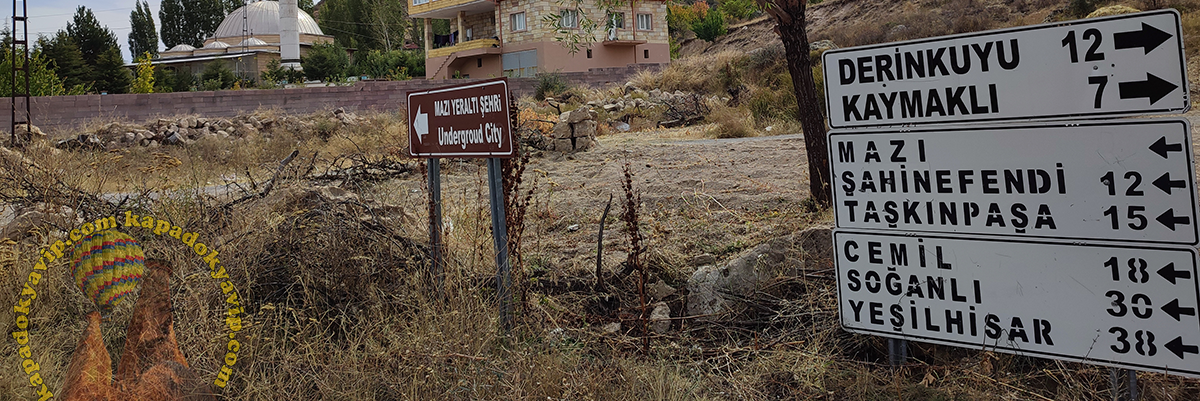
Mazı Underground city can be reached by heading to Mazı Village. To visit this underground city, travelers need to first reach the village center. Mazı Village is located in the Ürgüp district of Nevşehir province. The underground city is situated east of the Kaymaklı underground city, with a distance of 10 km between them. To reach Mazı underground city, visitors should first make their way to the village. Follow the signs and directions in Ürgüp, and the proximity to Kaymaklı underground city makes it convenient for travelers to explore both underground cities during their visit to the region.

Underground city entrance fee may vary in 2024, as entrance fees often undergo changes each year. Visitors are required to pay an entrance fee to explore the structures within the underground city. The Museum Pass can be used for entry to this underground city. Museum pass holders are entitled to two free entries per year, while Plus Museum Pass holders can enjoy unlimited visits at any time. The entrance fee for Cappadocia Underground City is set at 25 TL for the year 2024.
Mazı underground city operates within specific opening and closing hours, allowing visitors to explore at their convenience. Visiting hours may vary based on weather conditions during summer and winter months, as well as on special occasions. Special days and holidays may also bring about changes in visiting hours.
Is Mazı Underground City open? Yes, the underground city is open to visitors throughout the week. Opening Hours: 08:00 Closing Hours: 19:00 Ticket Booth Closing Time: 18:30
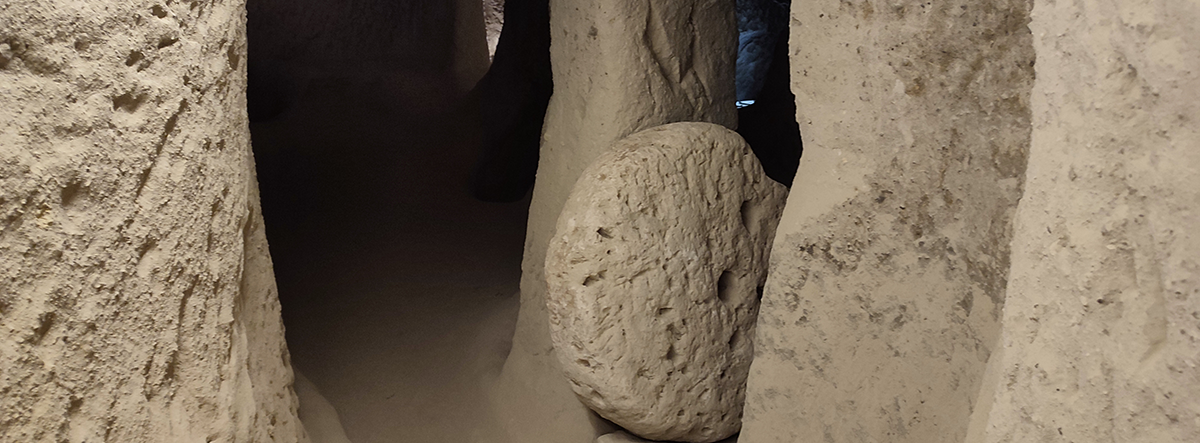
Where is Thuja Underground City Map
https://en.wikipedia.org/wiki/Mazı_Underground_City
Thuja Underground City Photos
